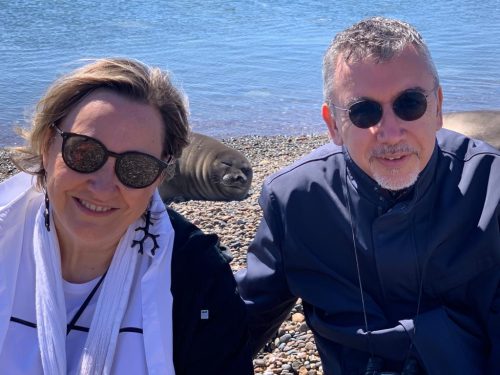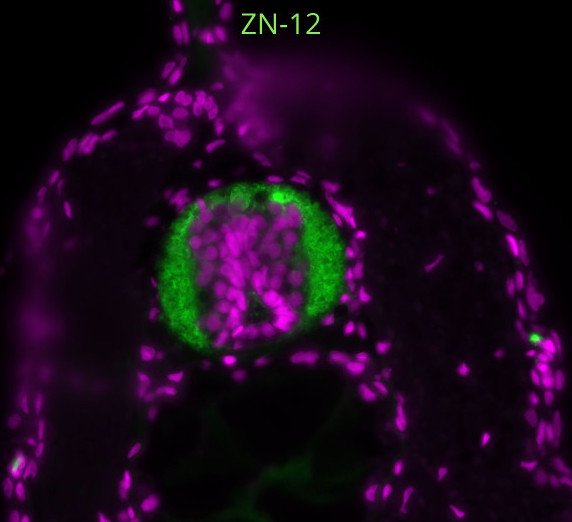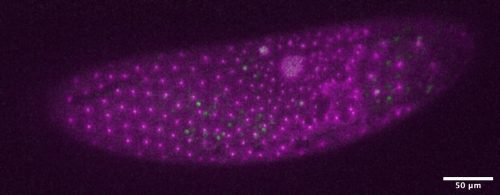Angela Nieto talks with Developmental Biology students
Posted by Aitana Castro, on 3 February 2022
The Quintay Practical Course in Developmental Biology 2020 student cohort interviewed Dr. Angela Nieto Toledano
Dr. Angela Nieto is a researcher, professor, scientific communicator whose work builds bridges between embryology and health research. Angela is the president of the ISDB (International Society of Developmental Biology), and she has received several scientific awards in recognition to her outstanding work – including her recent incorporation to the Royal Academy of Exact, Physical and Natural Sciences of Spain.
During the last MBL course in Quintay (January 2020), 18 students from the field of developmental biology had the opportunity to share meals, lectures, talks, ideas and ask advice from Dr. Nieto. Some of the discussions are summarized in this interview to share the experience more broadly with the developmental biology community.

1. What is snail and how did you start studying this gene? Why is snail so important for development and at the same time for processes involved in the evolution of cancer?
During my postdoc in London I had been working with David Wilkinson on the search for genes important for the development of the brain. Just before returning to Spain at the end of 1992, I found a new gene that was expressed in cells that were moving from one place to another in the embryo, a well-known process for which there was not much information on how it happened. We called that gene Slug, now known as Snail2, as we had previously isolated another family member, Snail1. Just then I decided that, in my new lab in Spain, I would devote my efforts to finding out how cells in the embryo move to form organs. In 1994, we found that Snail2 downregulation in chicken embryos prevented migration of both the neural crest and the mesoderm from the neural tube and the primitive streak, respectively. In this paper, published in Science, we hypothesized that the pathological activation of these genes could be involved in the acquisition of migratory and invasive properties in cancer cells, as at the cellular level, the delamination of cells from the primary tumour to start the metastatic cascade looked very similar to the delamination of neural crest cells from the neural tube. In 2000, we could show that this was the case.
2. What other things has your lab been interested in over the years?
We have continued to study the mechanisms that drive morphogenesis. Over the years we have found that the mechanisms that should only be active in the embryo are activated again in an aberrant way in different diseases, including cancer or organ degeneration. We continue to learn from the embryos in order to better understand the diseases and propose better therapeutic strategies.
3. Do you think that, in addition to effort and good ideas, there are rules to achieve success in a project? What are yours?
Passion, enthusiasm and resilience. It is also important to mention that scientific activity has degrees of freedom that other jobs do not have and this is very satisfying.
4. Your laboratory, like many in today’s world, is made up of researchers and students from multiple backgrounds. What are the advantages of this diversity?
In the lab, like in other aspects of our life and in nature in general, diversity is a source of richness and a selective advantage. A multicultural environment fosters knowledge and generosity and, in any case, science is universal and should promote strong links among individuals. We are now in the middle of a devastating and unexpected crisis, and we know that we will overcome Covid-19 only working all together. Scientific research has now taken centre stage in the news, let´s hope that it will continue to be, firstly because scientists could find a treatment and an efficient vaccine, and secondly because society realized the importance of investing in science as the only way to secure a prosperous future.
5. What advice would you give to female young researchers who want to develop a prolific career?
The career of a scientist is not easy, but in the case of women it is even more complicated because the crucial stage when the future is decided coincides with that of motherhood. We are still a long way from women being able to reconcile both aspects naturally. On the other hand, there are fields of science that have been and still are associated with men, and this means that many girls do not have female role models to look at. Girls develop the so called “dream gap”, something like the conviction that they are not going to be able to do well in scientific disciplines. This is now more dramatic than ever, as we are in a world of Technology, Artificial Intelligence and “Big Data”, where it is predicted that 80% of future jobs will be in the STEM disciplines. Therefore, we must help in two ways. The first is to help women who want to be scientists to continue their careers while they are mothers and the second is to change the sexist education that girls receive from the beginning. To do this, we must show models of successful women so that they see that it is possible and that they can do it too. In my case, I have been very lucky because I have always had the support of my family and my partner, and I have not had episodes of discrimination as I have progressed in my career. But we still have a long way to go.
6. Finally, this international course is composed mostly of students from Latin America, where many people dream of working in science since elementary school but have not had the best opportunities. What is your message to them?
First of all, I have to say that I have been very much impressed by the knowledge and enthusiasm of the students, and it has been a real pleasure to spend these days in Quintay. Thus, I want to thank Roberto Mayor and the other organizers for their efforts in organizing such a wonderful course for the last 20 years (and the many to come). My message to the students is quite simple, think high and work hard. And also think that science is fun and that, little by little, maybe we can help to better understand disease and improve our future.
The next EMBO Practical Course on Developmental Biology in Quintay, Chile from 4-16 January 2023 is now accepting applications. You can find more information on the course and how to submit your application here.


 (No Ratings Yet)
(No Ratings Yet)

 (7 votes)
(7 votes)


